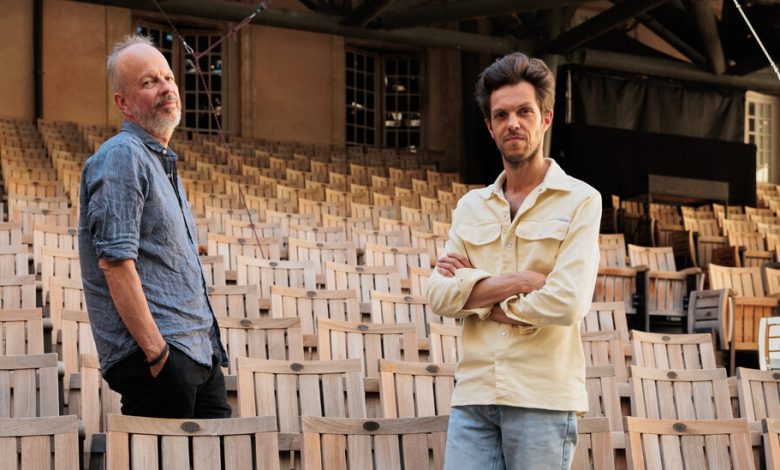A Lost Masterpiece of Opera Returns, Kind of

Voltaire and Rameau looked so much alike, how could they not have ended up as collaborators? An 18th-century drawing shows them bowing to each other, mirror images of gangly bodies and jutting chins.
Sealed by resemblance, the pairing of this pioneering philosopher and pioneering composer, two of Enlightenment France’s most important cultural figures, was exuberant — at least at first. “Don’t have children with Madame Rameau, have them with me,” Voltaire wrote to his partner, in a sly allusion to the works he wanted to create together.
Their first opera, “Samson,” opened on Thursday in an intense and moving performance at the Aix-en-Provence Festival, set in the crumbling ruin of a once-grand hall. But this “Samson” is not the one Rameau and Voltaire wrote. The original score was lost some 250 years ago, so the Aix production — the work of the conductor Raphaël Pichon and the director Claus Guth — is a quiltlike assemblage drawn from other Rameau pieces, with a largely new text inspired by the biblical Samson story.
The crucial challenge of such a pastiche is making a sewn-together amalgam feel like an organically flowing work. “There are questions of connection,” Pichon said in an interview. “The tonal relationships between everything, the harmonic journey, the details of orchestration.”
But performed with relish by Pygmalion, Pichon’s period-instrument orchestra and choir, this “Samson” retains the hypnotic continuity of Rameau’s complete operas, their steadiness and also their variety, veering from festive to soulful, from raucous dances to hushed, hovering arias and radiant choruses.
